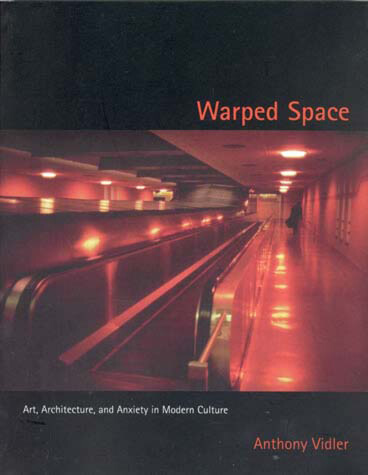The MIT Press
2 total works
Beginning with agoraphobia and claustrophobia in the late nineteenth century, followed by shell shock and panic fear after World War I, phobias and anxiety came to be seen as the mental condition of modern life. They became incorporated into the media and arts, in particular the spatial arts of architecture, urbanism, and film. This "spatial warping" is now being reshaped by digitalization and virtual reality. Anthony Vidler is concerned with two forms of warped space. The first, a psychological space, is the repository of neuroses and phobias. This space is not empty but full of disturbing forms, including those of architecture and the city. The second kind of warping is produced when artists break the boundaries of genre to depict space in new ways. Vidler traces the emergence of a psychological idea of space from Pascal and Freud to the identification of agoraphobia and claustrophobia in the nineteenth century to twentieth-century theories of spatial alienation and estrangement in the writings of Georg Simmel, Siegfried Kracauer, and Walter Benjamin. Focusing on current conditions of displacement and placelessness, he examines ways in which contemporary artists and architects have produced new forms of spatial warping. The discussion ranges from theorists such as Jacques Lacan and Gilles Deleuze to artists such as Vito Acconci, Mike Kelley, Martha Rosler, and Rachel Whiteread. Finally, Vidler looks at the architectural experiments of Frank Gehry, Coop Himmelblau, Daniel Libeskind, Greg Lynn, Morphosis, and Eric Owen Moss in the light of new digital techniques that, while relying on traditional perspective, have radically transformed the composition, production, and experience—perhaps even the subject itself—of architecture.
The Architectural Uncanny presents an engaging and original series of meditations on issues and figures that are at the heart of the most pressing debates surrounding architecture today. Anthony Vidler interprets contemporary buildings and projects in light of the resurgent interest in the uncanny as a metaphor for a fundamentally "unhomely" modern condition. The essays are at once historical—serving to situate contemporary discourse in its own intellectual tradition and theoretical—opening up the complex and difficult relationships between politics, social thought, and architectural design in an era when the reality of homelessness and the idealism of the neo-avant-garde have never seemed so far apart.
Vidler, one of the deftest and surest critics of the contemporary scene, explores aspects of architecture through notions of the uncanny as they have been developed in literature, philosophy, and psychology from the beginning of the nineteenth century to the present. He interprets the unsettling qualities of today's architecture—its fragmented neo-constructivist forms reminiscent of dismembered bodies, its "seeing walls" replicating the passive gaze of domestic cyborgs, its historical monuments indistinguishable from glossy reproductions - in the light of modern reflection on questions of social and individual estrangement, alienation, exile, and homelessness.
Focusing on the work of architects such as Bernard Tschumi, Rem Koolhaas, Peter Eisenman, Coop Himmelblau, John Hejduk, Elizabeth Diller, and Ricardo Scofidio, as well as theorists of the urban condition, Vidler delineates the problems and paradoxes associated with the subject of domesticity.

